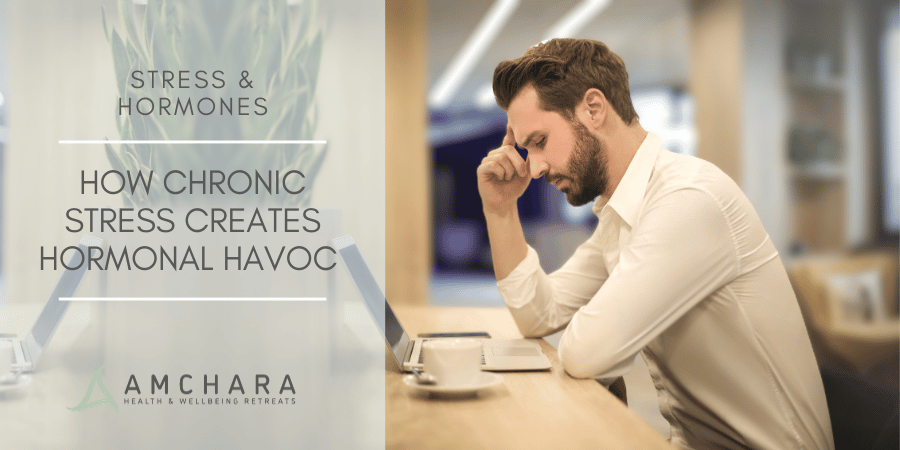Hormones which are out of balance can cause many unpleasant symptoms.
These range from menstrual irregularities such as heavy and painful periods, menopausal symptoms like hot flushes and night sweats, to symptoms of thyroid imbalance including weight gain, depression and memory problems.
We are dedicated to providing you with informative, evidence-based articles to provide you with actionable knowledge and tips to help you on your journey to optimal health. In this article we’ll look at a therapy you may not have considered in relation to balancing your hormones – reflexology.
What is reflexology?
Reflexology is an energy therapy which shares similarities with acupuncture and Traditional Chinese Medicine. It’s thought to have roots in ancient Egypt, and texts also exist suggesting it was used by Chinese Emperors around 1000BC.
It appears in Italian literature from the 1300s, showing its origins in Europe go back many years. It became popular in the West in the 1900s, when it was referred to as zone therapy.
Reflexology acknowledges the existence of energy channels in the body called meridians, through which energy flows, known as qui. When we experience health issues, these meridian channels can become blocked or sluggish. The idea behind reflexology is to improve the flow of energy and therefore restore the body to its natural state of wellbeing.
Reflexologists believe areas on the feet, known as reflex points, mirror the body’s organs and systems, such as the reproductive system. Several important energy meridians are located in the feet and connect with the body’s organs.
The therapy involves the stimulation of reflex points by gentle pressure. Generally, the left hand or foot represents the left side of the body and vice versa.
The points corresponding to the ovary and fallopian tubes are found on the inside and the outside of both ankles, in the hollow areas just under the ankle bones. There are also reflexology points on the ears and hands.
Although the existence of meridians hasn’t been scientifically demonstrated, the concept of these channels of energy has been the basis for many traditional treatment modalities dating back thousands of years, such as acupuncture. On a scientific basis, we know there are many hundreds of nerve endings in the feet which connect all over the body.
As a therapy reflexology is non-invasive and very gentle, yet surprisingly powerful.
Reflexology and hormone balance
Hormones are chemical messengers created by glands of the endocrine system which stimulate action from tissues or cells. They bring about a variety of effects, depending on which tissue or organ they are targeting, so hormone imbalance can cause a variety of symptoms at different times of life.
Imbalances occur when the body produces too little or too much of a particular hormone and can also occur when a hormone doesn’t break down rapidly enough, so its levels become elevated. This often happens in the case of oestrogen.
Reflexology is reported to have a number of benefits including toxin removal, supporting the immune system, improving circulation and stimulating the reproductive glands, all of which can affect hormone balance.
Reflexology has been used successfully for many health issues connected with hormone imbalance, such as:
- Irregular menstrual cycles, heavy and painful periods
- PMS
- Anxiety and depression associated with pregnancy
- Infertility
- Menopausal symptoms such as aching joints, bloating and hot flushes
- Sleep disturbances
- Skin problems
- Concentration and memory difficulties
- Brain fog
- Fatigue
- Weight gain
- Low libido
- Headache and migraine
One of the benefits of reflexology is stress relief – because hormonal imbalances are closely connected with stress, the stress-relieving effects of reflexology can help balance hormones.
Reflexology may help modulate the autonomic nervous system, the part of the nervous system involved in functions which are not under conscious control, such as breathing and heart rate. These are the functions which are sensitive to stress.
Reflexology may help take us out of the sympathetic-dominant response, which is responsible for the fight/flight reaction to stress, towards the parasympathetic, rest and digest mode (1).
A reflexology session is a safe space in which to relax, receive care and focus on yourself. An empathic therapist, who understands the physical and emotional feelings associated with hormonal imbalance and takes your problems seriously, can help to relieve stress.
Clinical trials on reflexology and hormone balance
To date there have been a handful of clinical trials with regard to reflexology and hormonal imbalances. In one study, volunteers who received foot reflexology experienced a 23% reduction in PMS symptoms compared to women who had received no treatment (2). There have been some studies which have noted an improvement in circulation following reflexology treatments.
One notable difficulty with attempting to scientifically assess reflexology is the difficulty of designing a double-blind, placebo controlled trial, the gold standard for scientific research.
Placebo controlled means the subject under investigation is compared to an inert treatment, known as a sham treatment. Double-blind refers to neither the subjects nor the researchers administering the treatment being aware who is receiving which procedure. This is intended to avoid the placebo effect, where people unconsciously expect to feel better after a treatment and it is this expectation, rather than the treatment itself, which produces the results.
Some studies have used foot massage as a placebo technique but the problem with this is not only is this likely to be distinguishable from reflexology by subjects, but the therapists will know which therapy they are administering. There is also the probability certain reflex points will be stimulated, even by the placebo treatment.
Several research studies have however shown reflexology can alleviate stress by affecting the levels of the stress hormone cortisol (3).
What you can expect from a reflexology treatment
Your initial consultation will involve taking a case history including your motivations for seeking treatment, along with your past and present health and lifestyle. This personalised approach enables the treatment to be tailored to your needs and goals.
Treatment usually takes place lying down on a treatment couch with your shoes and socks removed. The reflexologist will massage and apply gentle pressure to the feet, paying specific attention to the organs and systems of the body in need of support and balance. Most people feel a sense of relaxation during the session, and some experience sensations of tingling and warmth in parts of the body.
The beneficial effects of reflexology appear to be cumulative, so you may find you benefit from a course of treatments.
Takeaway
Reflexology is a tried and tested practice which can support you on your journey towards balanced hormones.
A Personalised Health practitioner can offer you further guidance to support your hormonal health through nutritional and lifestyle modifications, based on your individual circumstances.
We believe sharing knowledge and experience is an important part of achieving optimal health and would love to hear your views and experiences.
Have you used reflexology for a hormone imbalance?
Please share your thoughts in the comments.
Read this next:




